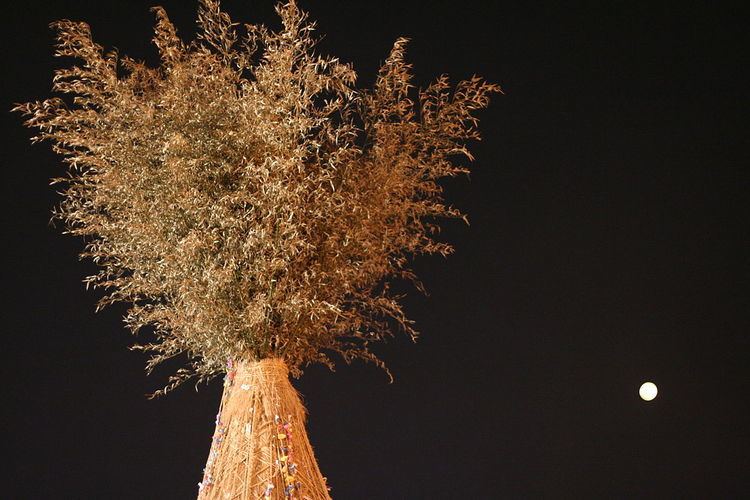Official name Daeboreum (대보름) Observed by Koreans | Also called Great Full Moon Type Cultural | |
 | ||
Date 1st full moon of the lunar year | ||
Daeboreum (literally "Great Full Moon") is a Korean holiday that celebrates the first full moon of the new year of the lunar Korean calendar which is the Korean version of the First Full Moon Festival. This holiday is accompanied by many traditions. The 2017 date is February 11.
Contents
Traditions
One familiar custom is to crack nuts with one's teeth. It is believed that this practice will help keep one's teeth healthy for the year.
In the countryside, people climb mountains, braving cold weather, trying to catch the first rise of the moon. It is said that the first person to see the moon rise will have good luck all year or a wish will be granted.
On the day, people play the traditional game named Jwibulnori (쥐불놀이) the night before Daeboreum. They burn the dry grass on ridges between rice fields while children whirl around cans full of holes, through which charcoal fire blaze. These cans fertilize the fields and get rid of harmful worms that destroy the new crops.
Food
For breakfast on Daeboreum, Ogokbap (오곡밥 / 五穀밥), a five-"grain" rice consisting of rice, millet, Indian millet, beans, and red beans is served (gok includes grains and beans). This is eaten with various dried herbs. One of the special foods of Daeboreum is Yaksik (약식 / 藥食). This treat is made of glutinous rice, chestnuts, pinenuts, honey, sauce, and sesame oil. Also there is drinking for Daeboreum. It called 'Ear-quickening wine(귀밝이술)'. This alcohol means that if someone drank this alcohol, he or she would be quick to hear and hear good news for one year.
On this day, Koreans traditionally do not give any food to dogs since it is believed that dogs that eat on this day will contract gad flies and become ill during the coming summer.
